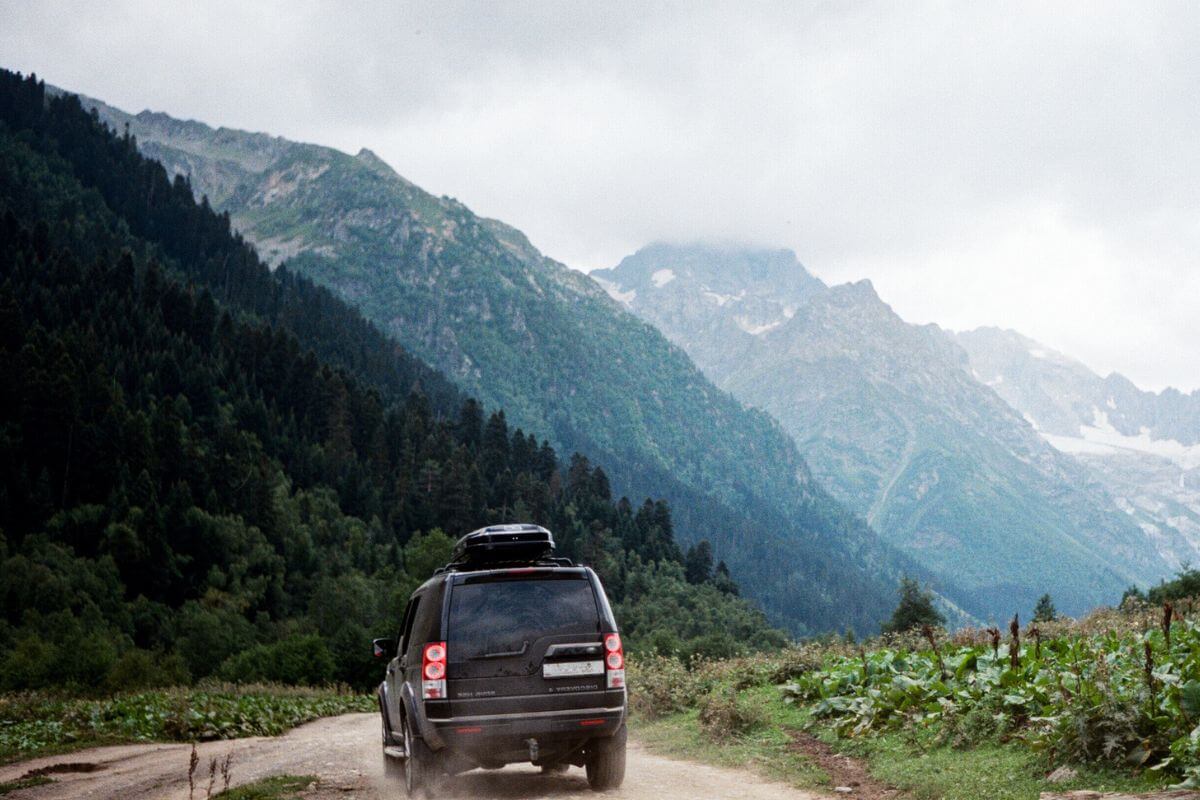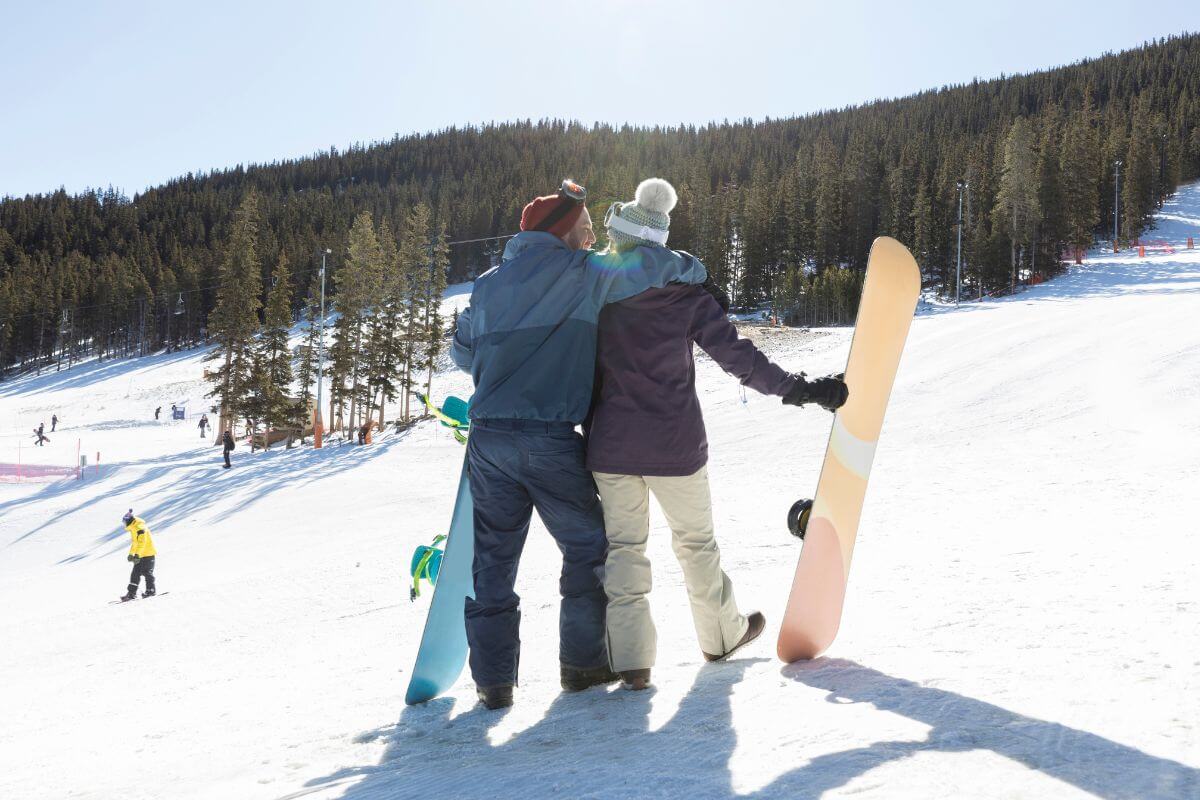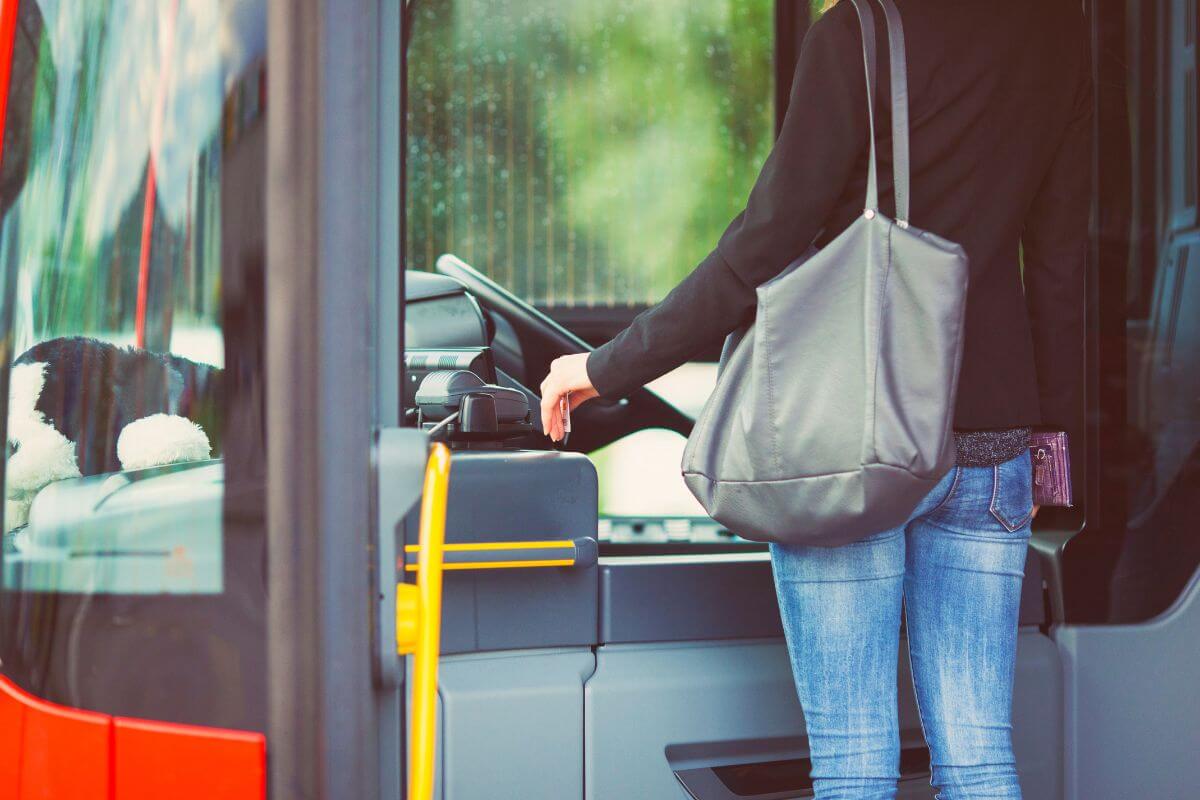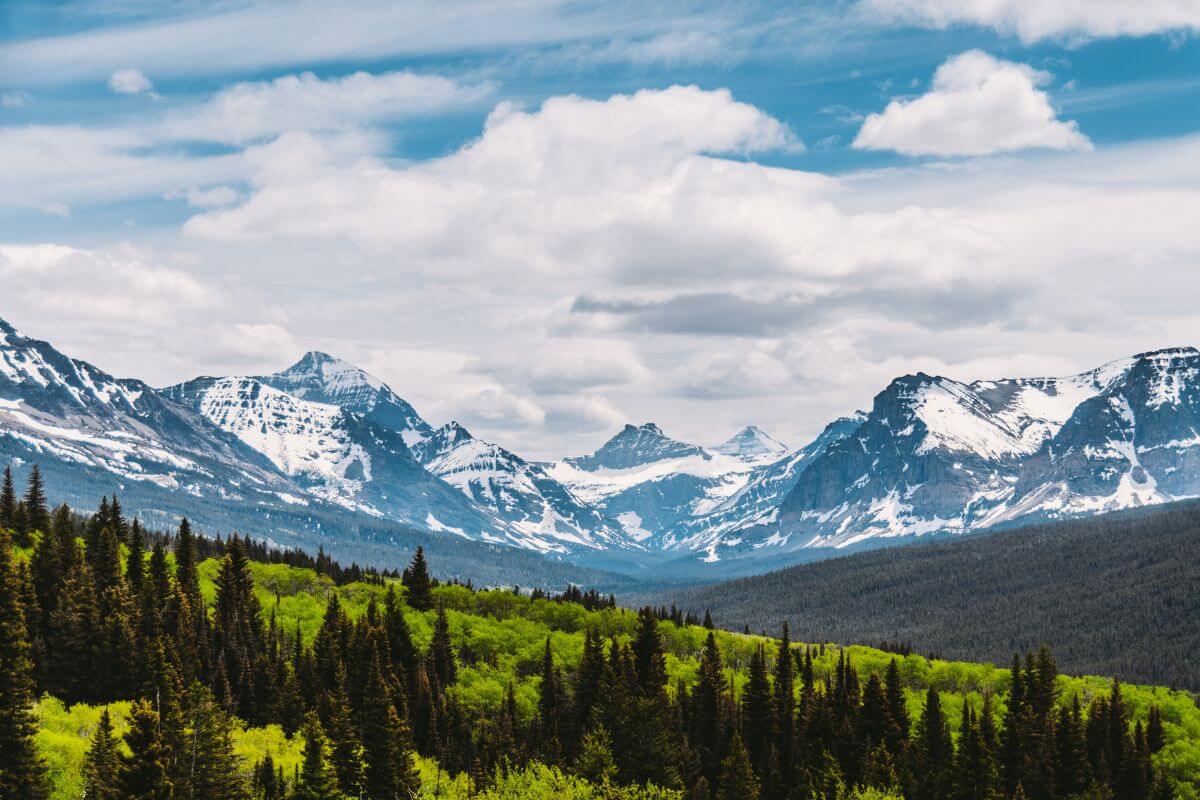Planning a trip to Montana and wondering, “How much does it cost to visit Montana?” You’re in the right place. Today, we’re going to dive into the nitty-gritty of trip costs to the state, from flights and accommodations to food and activities.
So, what can you expect to spend on a Montana adventure? On average, a one-week stay in Big Sky Country will set you back around $3,400. But here’s the exciting part: with a bit of smart planning, you can make your trip as grand or as budget-friendly as you desire.
This article is for you, offering practical advice and tips that will make your trip planning smoother and more enjoyable.
- Related article: Advice for Your Montana Travel
Are you ready to uncover the secrets to a cost-effective Montana getaway? Whether you’re a seasoned traveler or a first-time visitor, the following insights will help you craft an unforgettable journey without breaking the bank.
Key Takeaways
- A 7-day trip to Montana can cost around $3,400, but there are plenty of ways to trim expenses, like visiting during off-peak seasons and being flexible with travel dates.
- Accommodation options range from $70 to $250 per night, with camping offering the most budget-friendly choice.
- Flight costs can range from $300 to $500, but savvy tips like searching in incognito mode and traveling midweek can help you find affordable fares.
- Food and drink expenses can be managed by grocery shopping, seeking accommodations with complimentary breakfasts, and dining out strategically.
- Activity costs vary, with national park fees at $35 per vehicle and options like scenic train rides and skiing offering affordable and memorable experiences.
- Transportation costs are generally low, with options like free buses in certain areas and car rentals averaging around $25 per day.
- Planning and budgeting in advance, taking advantage of local deals, and being open to unique experiences can make your Montana trip both unforgettable and affordable.
Estimated Average Expenses for a Montana Trip

Planning your 7-day trip to Montana, you’ll find that the average price for a memorable experience in Big Sky Country is surprisingly affordable, especially when compared to international flights.
Here’s a breakdown of what to expect for travel expenses:
| Expense Category | Average Cost | Description |
|---|---|---|
| Accommodation | $125 per night | Cost for a night’s stay in various options like hotels, motels, or bed and breakfasts in Montana. |
| Flight | $400 per person (varies based on factors) | The average flight cost per person is subject to change based on departure city and deals. |
| Food, Drink & Activities | $100 per day | A daily budget covering meals, beverages, and activities, allowing flexibility for exploration and dining. |
| Transportation | $300 (includes car rentals and gas) | Estimated cost for transportation including car rentals and fuel, particularly for exploring the state. |
With these figures in mind, you’re looking at a total estimated cost of $3,400 for a one-week stay in Montana. But don’t let that number set in stone; there are plenty of ways to trim down expenses.
For instance, if you’re flexible with your travel dates, visiting during the off-peak season can lead to significant savings on both flights and accommodations. Plus, you’ll avoid the crowds.
Your spending habits will also influence your budget. If you’re someone who enjoys self-catering, you can save a lot by shopping at local grocery stores and taking advantage of complimentary breakfasts if your accommodation offers them.
On the other hand, if you’re keen to explore Montana’s culinary scene, from high-end restaurants to quirky food trucks, allocate a little extra in your budget. For nature enthusiasts, a single park pass can be a golden ticket to endless hiking adventures, offering substantial savings compared to the cost of daily private tours.
By planning your outdoor activities wisely, you’ll not only save money but also immerse yourself in Montana’s stunning natural beauty at your own pace. Remember, these figures are averages and your actual costs can vary. With a bit of research and some smart planning, your Montana adventure can be as grand or as budget-friendly as you desire.
Montana Trip Cost: Breakdown by Category

Planning a trip to Montana can be an exciting adventure, but determining the average cost of your trip is essential for budgeting purposes.
To help you prepare for your Montana adventure, we have broken down the average trip cost by category to give you a clear understanding of what to expect in terms of expenses.
1. Accommodation Costs

When planning your Montana adventure, keeping an eye on vacation expenses is key to a stress-free experience.
Staying in a 2- to 3-star hotel in one of Montana’s charming cities will generally cost you around $100 per night. It’s a comfortable option without being very costly, and I’ve found that these accommodations often come with that warm Montana hospitality.
If you’re drawn to the allure of Yellowstone National Park in the summer or Montana’s renowned ski slopes during the winter months, be prepared for a spike in your budget. Resorts in these prime locations can command around $300 per night.
Montana’s national forests are a treasure trove for nature lovers and offer a spectrum of camping options. I’ve spent nights under the stars at campgrounds with minimal facilities for as low as $5 per night.
If you’re looking for more amenities, like showers or RV hookups, prices can go up to $40. Camping is not only a way to connect with nature, but also a smart strategy to keep costs down.
To balance your budget, consider interspersing cost-effective car camping with your resort stays. This blend allows you to save on some nights, so you can indulge in others without the guilt.
For a more unique stay, scour for deals on guesthouses or Airbnb rooms. With prices typically ranging from $125 to $150 per night, these vacation rental prices offer a middle ground between hotels and high-end resorts, often providing a cozy and more personal touch to your stay.
Aiming for an average budget of around $125 per night is realistic, especially if you mix camping, hotel stays, and perhaps a resort night or two. This average considers the current prices and gives you the flexibility to experience the best of Montana without financial strain. Keep an eye out for seasonal deals, and your wallet will thank you.
2. Flight Costs

When planning your Montana adventure, the cost of getting there by air is a key budget consideration.
If you’re flying from major hubs in the U.S., you might find round-trip fares hovering around the $300 mark. For those departing from smaller airports, prepare to budget a bit more—typically between $400 to $500.
But don’t let these numbers set in stone; I’ve noticed that during the shoulder seasons, particularly in spring and fall, airfares tend to dip, offering a sweet spot for cheaper trips.
To snag affordable flights, I can’t stress enough the importance of searching in incognito mode. This savvy move keeps your browsing history under wraps, preventing travel sites from marking your repeated interest with sneaky price hikes.
Now, flexibility can be your wallet’s best friend. By tweaking your travel dates just slightly—say, shifting your departure or return by a day or two—you can uncover significant savings. It’s remarkable how these minor adjustments can shave off dollars, often in the hundreds, from your total cost of flights.
Midweek travel is another secret to unlocking lower fares. If you can swing a Tuesday or Wednesday flight instead of the weekend rush, your bank account will thank you. For week-long stays, consider a midweek to midweek itinerary.
This can often lead to the most substantial savings, and who doesn’t love having a few extra hundred dollars for that special dinner or once-in-a-lifetime excursion? Even if your schedule is as rigid as the Rockies, don’t lose hope. There are still ways to trim those airfare costs to Montana.
Keep an eye out for alerts on price drops, sign up for airline newsletters, and don’t shy away from using those hard-earned miles or reward points. You can also look up flight costs from your airport for more tailored flight pricing.
With a little creativity and persistence, affordable flights to Big Sky Country are well within reach, even on the most inflexible itineraries.
3. Food, Drink and Grocery Costs

When you’re mapping out your budget for the cheapest trip to Montana, keeping an eye on your food and drink expenses can help you save a pretty penny. Dining out and grocery shopping in Big Sky Country are akin to what you’d encounter across the states, give or take a few dollars.
But here’s a nifty perk — Montana skips the sales tax, which means a bit more cash stays snug in your wallet. Let me share some savvy strategies to stretch your dining dollars:
- Grocery Shopping – Stock up on snacks and lunch items at local supermarkets. This can be a game changer for your budget, and you’ll get to sample regional flavors from the comfort of your picnic blanket or hotel room.
- Snack Smart – Invest in a portable cooler for on-the-go munching. Packing protein-packed snacks can keep your energy up while you’re out exploring, and it’s kinder to your bank account.
- Free Breakfast – Seek out accommodations that offer breakfast on the house. It’s one less meal to worry about, and you can start your day with a full belly.
- Hydrate for Less – A refillable water bottle is your best friend in Montana. Fill up for free and stay hydrated without constantly buying bottled water.
- Evening Sips – Fancy a drink as the sun sets over the mountains? Buy your booze at a grocery store rather than a bar to save some cash for tomorrow’s adventures.
- Dine with a Plan – Scour menus online and pick your must-visit eateries in advance. This way, you’re making thoughtful choices, not just following your stomach when it’s growling the loudest.
I’d recommend setting aside around $100 per day for your culinary escapades. This estimate includes a mix of dining out, grabbing groceries, and the occasional street food treat.
With this budget, you’re all set to savor the tastes of Montana without the worry of overspending. You’ll have the freedom to enjoy a hearty steak dinner, a casual brewery lunch, or a simple, self-catered meal with a mountain view.
4. Activity Costs

When it comes to activities in Montana, the options are as diverse as the landscapes themselves. Here’s a breakdown of what you can expect to spend on these experiences:
- National Park Entrance Fees – Consider the $80 America the Beautiful National Park pass for year-round access to parks like Yellowstone and Glacier, saving on the $35 per vehicle entrance fee. It’s a cost-effective way to explore multiple national parks.
- Charlie Russel Chew Choo – The Charlie Russel Chew Choo offers a scenic train ride complete with meals, entertainment, and a Western ambiance, all for under $140.
- North Pole Adventure Train – Experience festive joy with the North Pole Adventure Train during the holidays, featuring Christmas tales, cookies, and a visit from Santa. Family-friendly ticket prices ensure a priceless and memorable holiday outing.
- Lewis and Clark State Park – Explore Montana’s rich history at the Lewis and Clark State Park—a scenic and educational destination with an $8 per person fee (children under 16 enter for free). Gain valuable insights into the state’s wilderness and the famous expedition.
- Skiing on a Budget – Opt for affordable slope options like Bear Paw Ski Bowl (day ticket: $25) and Maverick Mountain (day ticket: $45) for a budget-friendly yet authentic Montana winter experience.
As you plan your Montana adventure, consider adding a mix of these activities to your itinerary. Whether you’re a nature enthusiast, a history buff, or a family on vacation, Montana has something special in store for you at a range of price points.
5. Transportation Costs

When it comes to getting around Montana, the good news is that public transportation costs here are on par with the rest of the US, but with a budget-friendly twist. Think of it as the best of both worlds: the convenience of public transit without the eye-watering prices you’d find in a major city.
If you’re in a city like Bozeman or Missoula, you’ll find some pretty sweet deals. On average, bus fares hover around $2, which is a steal compared to your typical metro ride.
However, there are some free bus services available in certain areas of Montana:
- Bozeman – Bozeman’s fare-free bus service, Streamline, covers 5-weekday routes, serving Montana State University, neighborhoods, businesses, and landmarks. It also provides weekend and seasonal service to Livingston from October to April.
- Missoula – Missoula’s zero-fare bus service, Mountain Line, is accessible on all routes, covering the airport, downtown, and the mall. Spanning over 36 square miles, the service also offers convenient bike racks on buses.
If you’re more of a taxi person, a ride from Bozeman Airport to the city center will set you back around $50.
For the ultimate convenience, especially if you plan on exploring national parks like Glacier National Park or rural areas, renting a car is a smart move. Prices can be as low as $25 per day or less, and it gives you the freedom to go wherever the wind takes you.
When budgeting for transportation expenses during your trip to Montana, include costs for airport transfers, shuttle tours, car rentals, and fuel. Allotting around $300 for transportation expenses should provide enough flexibility for a comfortable and convenient travel experience.
Cheapest Months to Explore Montana

The shoulder seasons in Montana, from April to June and October to November, are the cheapest dates for budget-friendly travel. During these times, flights tend to be cheaper and there are fewer crowds, making it easier to find affordable accommodation and enjoy activities without the tourist rush.
The pleasant weather allows for access to outdoor activities while experiencing decreased tourist traffic, potentially leading to reduced costs. Visiting during the off-season months after the holiday seasons, such as January and February, can also result in lower prices, despite the colder and snowier conditions.
However, if you’re looking for the overall best time for budget-friendly visits, September is recommended. Falling within a shoulder season, September provides favorable weather for outdoor activities and potentially lower prices due to decreased tourist traffic.
Whether you’re looking to explore the stunning Glacier National Park, enjoy outdoor adventures, or simply take in the natural beauty, visiting Montana during the shoulder or off-seasons can help you save money while still experiencing all the wonders this state has to offer.
Montana Trip Cost Final Thoughts

Planning a trip to Montana on a budget is feasible with some smart decision-making. By opting for low seasons such as April to June, October to November, and possibly January to March, travelers can benefit from reduced flight and accommodation costs as well as fewer crowds.
September is also highlighted as an ideal budget-friendly month due to pleasant weather and potential savings opportunities.
Accommodations in Montana range from affordable hotels to potential resort stays, and diverse, affordable activities cater to all interests. Food prices align with the US average, and strategic choices can save money when it comes to dining.
Transportation costs are reasonable, with bus services and affordable car rentals available. Spending habits can vary, from grocery shopping to upscale dining, allowing for flexibility in expenses.
With strategic planning and leveraging affordable options across accommodations, activities, dining, and transportation, exploring Montana on a budget is not only possible but also rewarding. Smart planning is key to making the most of a trip to Montana while keeping costs in check.
Montana Trip Cost FAQs
1. Is Montana Cheaper Than New York?
Montana is generally cheaper than New York, with New York being 13.2% more expensive than Montana.
The cost of living in Montana is between 25 to 50% cheaper in transportation, housing, food, utilities, and healthcare compared to New York.
2. How Much Is the Entrance Fee in Glacier National Park?
- Single Vehicle Entrance Fee: $30 for 7 days per vehicle ($20 during winter season)
- Motorcycle Entrance Fee: $25 per person ($15/winter)
- Annual Pass for Glacier National Park: $50
- Annual Pass for All National Parks: $8
Entrance fees are based on the seating capacity of the vehicle (driver not included). The pass is good for seven days and is non-transferable.
3. Do You Need a Car to Visit Montana?
Visiting Montana without a vehicle is feasible.
Renting a car is a popular option for visitors to Montana, with accessible locations throughout the state and various car rental services available.
The cost of renting a car in Montana varies depending on the rental company, type of car, and time of year.
Enjoyed what you just read? Explore our Montana section for further insights:

